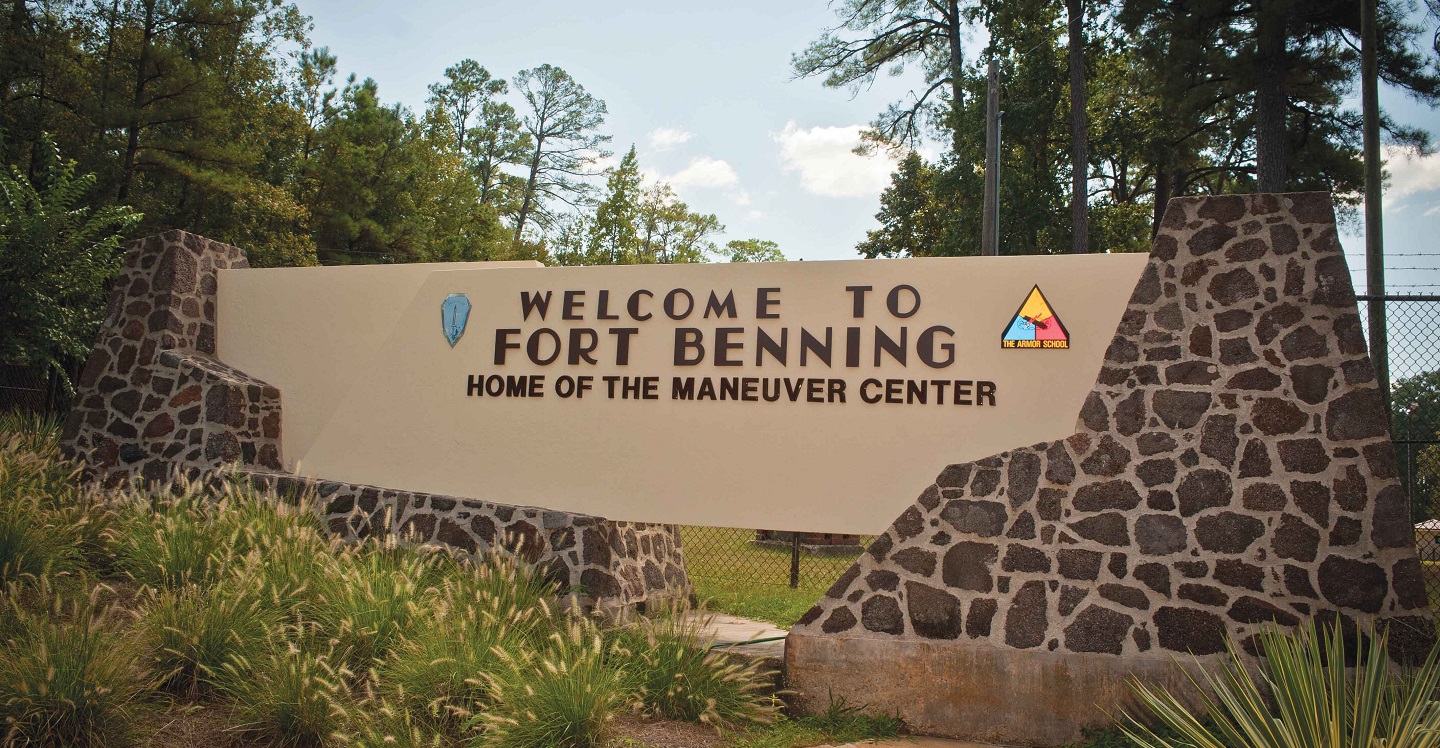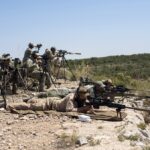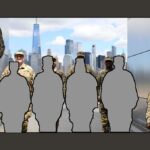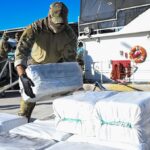
I would venture to say that there are a lot of black troops that understand what those names mean and just have chosen not to take it up as an issue.
Bragg, Benning and Hood are names that are universally known throughout the Army and most of the Department of Defense. They are some of the largest installations in the Army, and they are home to the Airborne Corps, Special Operations, the Infantry, Armored and Cavalry branches to name a few. Millions of soldiers have lived, trained and deployed from these posts. But to some, the individuals that these forts are named after are a divisive point. All three were Confederate generals, and what they represent to many service members and civilians is deeply hurtful. A BETTER PEACE welcomes Vianesa Vargas to discuss her recent research centered around the need for change in the DoD. She joins podcast editor Ron Granieri to explain why now is the time to rename these and other installations and ships and acknowledge their impact on the whole of the force and the inclusiveness the U.S. military strives to represent.
Podcast: Download
Subscribe: Android | Email | RSS
Vianesa Vargas is a Lieutenant Colonel and Logistics Readiness Officer in the U. S. Air Force and a member of the AY20 resident class at the U.S. Army War College. Ron Granieri is an Associate Professor of History at the U.S. Army War College and the Editor of A BETTER PEACE. The views expressed in this presentation are those of the speakers and do not necessarily reflect those of the U.S. Army War College, U.S. Army, or Department of Defense.
Photo Description: The “Stone Gate” on Benning Road at Ft. Benning, Georgia. The fort is named after after Henry L. Benning, a brigadier general in the Confederate States Army during the Civil War. Since 1909, Fort Benning has served as the Home of the Infantry.





This was an excellent and very timely conversation. I found the discussion of how the different Services have chosen to address the issue of Confederate legacy to be an interesting one. I was also intrigued by Col. Vargas’s suggestion for alternative namesakes for installations. Certainly the social media era has accelerated, though in no way created, our nation’s ability to look differently at historical figures over time. As we discover the human flaws in our human heroes, the concept of memorialization becomes fraught. Thank you for inviting us to look more broadly, and with historical mindedness, at the ways our armed forces have celebrated our past, and the role they play in moving our nation into the future.
Thank you, Ruth, for your thoughtful comment, and, as ever, for listening!
The US Army paired installation names in the run-up to the Spanish American War to encourage national unity in the Jim Crow era from 1880 to about 1920. Bragg and Pope are two examples – both were mediocre commanders. The Jim Crow era was a plot to deprive the sons of the slaves of there hard won civil rights. The Army had four Black regiments with good combat records throughout the period. Interestingly, Lee and Longstreet refused to take part in the “Lost Cause” statue craze. Remember that Reconstruction ended in the 1876 election compromise. The reaction of the Grand Army of the Republic to the end of Reconstruction was ” What did we fight and win for?!!” The Pledge of Allegiance started there!
Excellent comments on the historical context. I would argue that the more we know about how the decisions on naming were the product of a particular historical era (the Jim Crow turn of the Century) the less we can credit those arguments that they must be treated as fixed and immutable decisions, and the more open we can be about making changes to reflect a different historical and social era. It’s never easy to decide who gets to decide these things, of course, but the conversation is well worth having, and we’re so grateful to those of you who have listened and want to participate.
This was a fantastic discussion. Lt. Col. Vargas’s research should be required reading for senior officers of all the services. I found her comment about human beings all having frailties to be especially insightful. Jim O’Brasky’s comment about the influence of the Spanish-American War run-up is important, and I would add to it that this was done in the heyday of the Lost Cause. I think Lt. Col. Vargas was spot on in highlighting the fact that these men were engaged in disunion instead of uniting the nation.
Will they consider renaming the Sherman tank and the Sheridan tanks with other names as well?
Trail of Destruction: Drawing a line from Sherman’s scorched-earth March to the Sea to World War II air raids on Germany. By Jonathan W. Jordan March 27, 2015 4:19 pm ET
https://www.wsj.com/articles/book-review-shermans-ghosts-by-matthew-carr-1427487556
Decisive Battles of the USA by J. F. C. Fuller
America’s Civil War: John Mosby and George Custer Clash in the Shenandoah Valley
Grant quickly responded to this stinging defeat by ordering Sheridan to send troops ‘through Loudoun County, to destroy and carry off the crops, animals, Negroes, and all men under fifty years of age capable of bearing arms. In this way, you will get many of Mosby’s men.’ He also ordered Sheridan to hunt down the families of Mosby’s men. ‘I think they should be taken and kept at Fort McHenry, or some other secure place, as hostages for the good conduct of Mosby’s men.’ Grant then ominously added ‘When any of Mosby’s men are caught, hang them without trial.’
Three days later, Grant’s orders were carried out when seven prisoners, thought to be Mosby’s Rangers, were executed . Although Mosby denied they were his men, he was already making plans to retaliate.
Sheridan had been in the Shenandoah for less than two weeks, and already the Valley was witnessing a more vulgar form of warfare than it had ever seen.
Mosby heard reports that Custer, in particular, was pursuing his orders with a special vengeance, he blamed Custer personally for the seven executions. Mosby’s men began calling Custer ‘Attila the Hun,’ and bitter feelings between Custer’s men and Mosby’s Confederate outfit quickly rose to a high pitch. In one action on August 18, Custer learned that a light at a local farmhouse had served as a signal for guerrillas; so Custer ordered it and all of the surrounding homes destroyed. As his men were setting fire to the elegant residences, a group of Mosby’s men led by J. G. L. William Chapman charged from an overlooking ridge, splashed through the Shenandoah River, and smacked into Custer’s outfit. Chapman exhorted his men to ‘Wipe them from the face of the earth! No quarter! No quarter! Take no prisoners!’
Custer’s squad was taken totally by surprise and fled in panic. A local woman watched as the Northern troops ‘hid behind the burning ruins, they crouched in the corners of fences, they begged for life, but their day of grace was past.’ One unfortunate young Northern soldier was taken prisoner and Chapman’s men demanded he be executed for what his comrades had done. The young prisoner impressed his captors with the courage with which he faced death. One Ranger, John Scott, wrote, ‘It was a solemn spectacle to see this brave young soldier kneel in the solitude of the mountain and pour forth a fervent prayer to the Great Father to pardon his sins…. The young man then rose slowly to his feet and tearing open his shirt, with unquailing eye received the fatal shot.’
https://www.historynet.com/americas-civil-war-john-mosby-and-george-custer-clash-in-the-shenandoah-valley.htm
Where can we access the author paper on the subject?
She will be publishing an essay in the War Room in the near future.